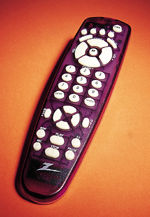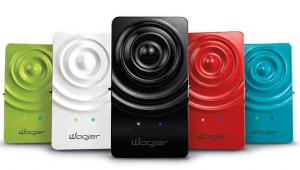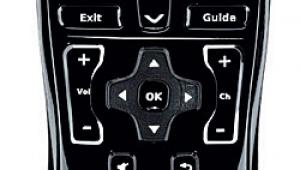Hello there. Top-notch performance sets Razer products apart and is why many gamers around the world prefer their devices. The company provides a large selection of products to its customers, and everyone, taking into account their needs and preferences, will be able to choose the best option for themselves. And if someone needs advice on the product they are purchasing, they can always contact razer customer service whose experienced employees can easily answer all questions that users may have.
Remote Possibilities Page 2
Universal Appeal
There are several advantages of using a universal remote...and a few disadvantages, as well. The biggest advantage is that the remote will control tons of gear with very little effort. A universal remote works through a computer chip in the remote that has thousands of instructions for hundreds of individual devices. First, you have to figure out what gear the remote you're interested in actually controls. This usually can be found on the back side of the packaging. For example, Zenith's digital universal remote (ZENDTV) controls TVs from Admiral to Zenith, so you just look on back to see if the type of TV you have in your system can be controlled by the remote. The same goes for any other device—whether it be a TV, VCR, cable box, DVD player, etc. Each device has a particular code. Say you've got a Panasonic TV. Look in the remote's instruction manual to find that model's individual code, in this case 007 (Bond, James Bond), and then program the code into your remote according to the instructions provided in the manual. Once you tell the remote what equipment you have, you're done.
 The major disadvantage of using codes for particular gear is that this can quickly make many universal remotes obsolete. For example, if you buy a universal remote and then buy a new Loewe TV a year later, your universal remote won't have codes for that model because, at the time the remote came out, the Loewe TV didn't exist. Granted, older codes will sometimes work with newer models, but this can create problems of its own, which we'll describe in a minute. On the other hand, universal remotes are often inexpensive, so it's easy to go down to RadioShack and get a newer model.
The major disadvantage of using codes for particular gear is that this can quickly make many universal remotes obsolete. For example, if you buy a universal remote and then buy a new Loewe TV a year later, your universal remote won't have codes for that model because, at the time the remote came out, the Loewe TV didn't exist. Granted, older codes will sometimes work with newer models, but this can create problems of its own, which we'll describe in a minute. On the other hand, universal remotes are often inexpensive, so it's easy to go down to RadioShack and get a newer model.
Another problem with using a universal remote is that, sometimes, the codes aren't exactly right. They might be close but don't correctly correspond with each other, causing communication problems between your remote and the device you're trying to control. For instance, your universal remote might list all Zenith TVs as 0056, but the codes for various Zenith TVs may vary slightly. Also, there may not be enough buttons on the remote to accommodate some of the TV's important functions. Most of the main functions should be available, as manufacturers don't change remote codes too radically from model to model, year to year.
Distance Learning
Although some universal remotes are also learning remotes, we're going to discuss learning remotes separately, since they're a little more cumbersome than universal remotes. It takes a bit longer to program them because you have to program each button on the remote individually. IR remotes use infrared codes that turn on for a specific period of time in order to trigger a command in the device. You program a learning remote by placing the source remote next to the learning remote and hitting the function buttons on the source remote. The learning remote then receives the infrared codes that the source remote is emitting. This way, the learning remote duplicates those infrared codes and eliminates the need for the source remote. So, if you hit the play button on your DVD player's remote with the learning remote nearby, the learning remote will "learn" that IR code and program itself so that you can control the player with the learning remote alone. Sometimes, the source remote's infrared codes are too short, too long, or in a different frequency range, so it's hard to use a learning remote with these devices. Some manufacturers do this on purpose to keep their swanky-looking remotes on your coffee table. Hmmph!
 The IR receiver on the actual source is a light sensor that picks up IR codes and reads frequencies (for example, 30 flashes per second could mean "play"). Obviously, you can't see IR because it's invisible; so, if you want to check to see if your remote's IR is working, you can point it at a video camera and look in the viewfinder, where you should be able to see the infrared light (the camera interprets IR as light).
The IR receiver on the actual source is a light sensor that picks up IR codes and reads frequencies (for example, 30 flashes per second could mean "play"). Obviously, you can't see IR because it's invisible; so, if you want to check to see if your remote's IR is working, you can point it at a video camera and look in the viewfinder, where you should be able to see the infrared light (the camera interprets IR as light).
- Log in or register to post comments
































































